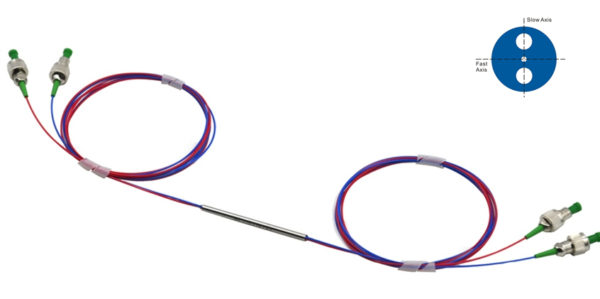When it comes to transmission of light signals, the “Polarization State” is one of the important characteristics that you need to focus on and Faraday rotators and isolators are those devices which help engineers to take care of it. So, today, we have decided to share the basic information about these crucial devices and their applications.

Faraday Rotator and Its Applications
It is a magneto-optic device which employs Faraday Effect to rotate the polarization state. In this device, the light is transferred through a transparent medium which is exposed to the magnetic field. The direction of magnetic field lines is approximately the same or the opposite as the direction of the beam.
If light is linearly polarized in some direction, this direction is continuously rotated while passing through the medium. When a linearly polarized beam is passed through a Faraday rotator and back again after reflecting in a mirror, the polarization changes of the two passes add up instead of canceling. This non-reciprocal behavior of Faraday rotator is what makes it distinct from other arrangements such as waveplates and polarizers.
Applications:
High power Faraday rotators are widely used in laser technology. Some of its major applications are:
- One of the most common applications of Faraday rotators is in Faraday isolators for protection of lasers and amplifiers against back-reflected light. In this application, the rotation angle should be close to 45 degrees in a particular spectral region. Highly uniform polarization rotation is required for attaining high attenuation for back-reflected light.
- A Faraday rotator is also used in a ring laser resonator for introducing round-trip losses that depend on the direction and, thereby, enforce unidirectional operation. Since only a very small difference of loss is enough most times, a Faraday rotator will be helpful to facilitate a small rotation angle.
- It can be used for Faraday mirrors which help in achieving a polarization direction that is orthogonal to that of the input beam even if the polarization state is not preserved by the amplifier. It works better than using a Faraday isolator, an amplifier, and an ordinary mirror.
- It is also used in interferometers because polarization state changes through the fiber are canceled out on the return trip.
Faraday Isolator and Its Applications
A Faraday isolator is typically an optic isolator which transmits light in a certain direction while blocking light in the opposite direction. They are variants of optical circulators having at least three ports and based on Faraday rotators.
Types:
Polarization Sensitive Faraday Isolators
It is the simplest one because it functions only when the input beam has a fixed direction of linear polarization.
Polarization Insensitive Faraday Isolators
This Faraday isolator is a device which works for arbitrary polarization of the input beam and therefore, it is widely used in fiber optics as many fibers don’t maintain polarization.
Applications:
- They are sometimes used for protecting laser or amplifier against back-reflected light. Some amplifier chains contain several isolators between different stages not only for protection purposes but also for amplified spontaneous emission.
- The polarizing property of a polarization-dependent isolator can be used within a laser resonator for enforcing linear polarization state or for mode locking with a nonlinear polarization rotation.
So, both high power Faraday rotators and isolators play a significant role in electronics and telecommunication industry.

